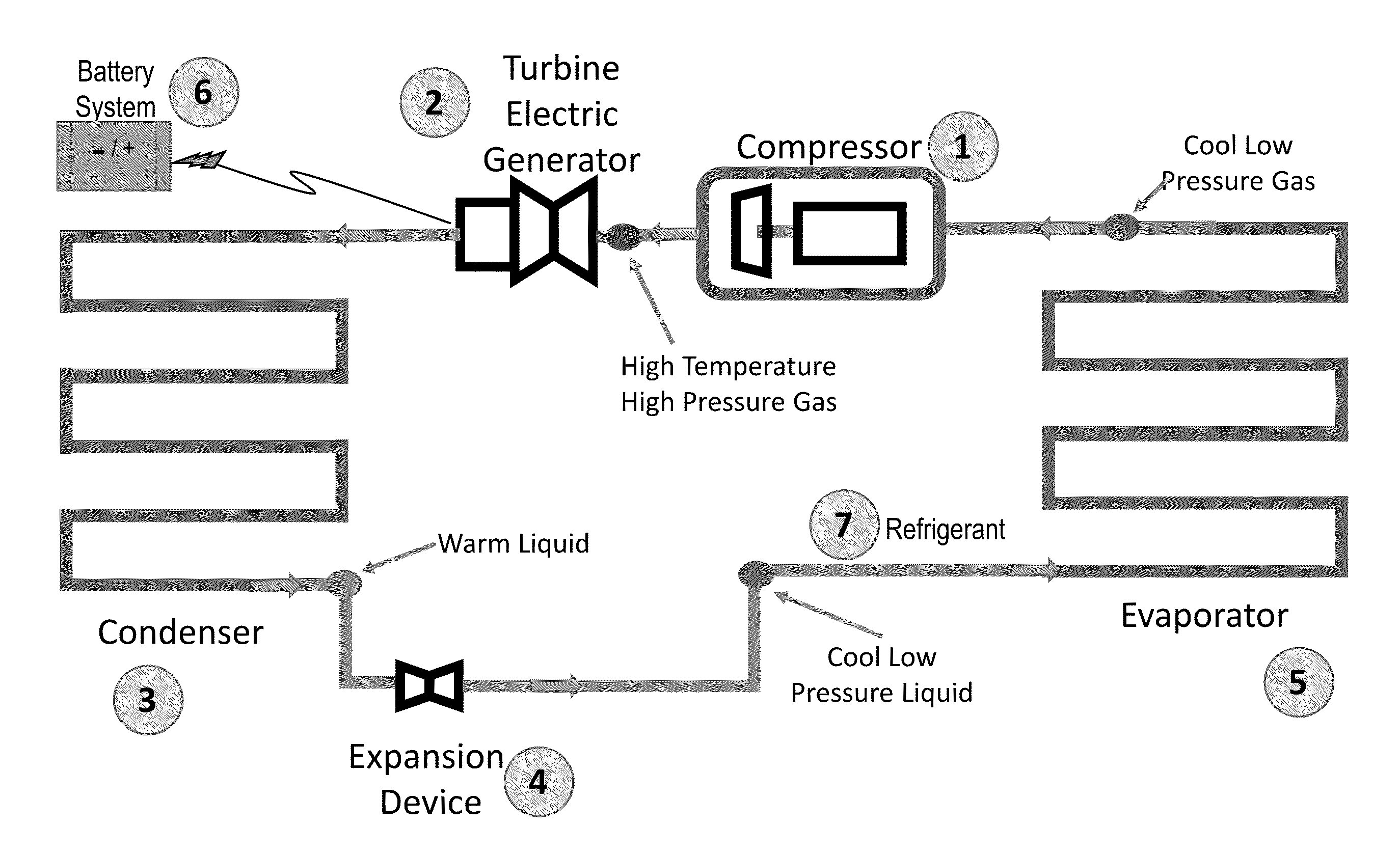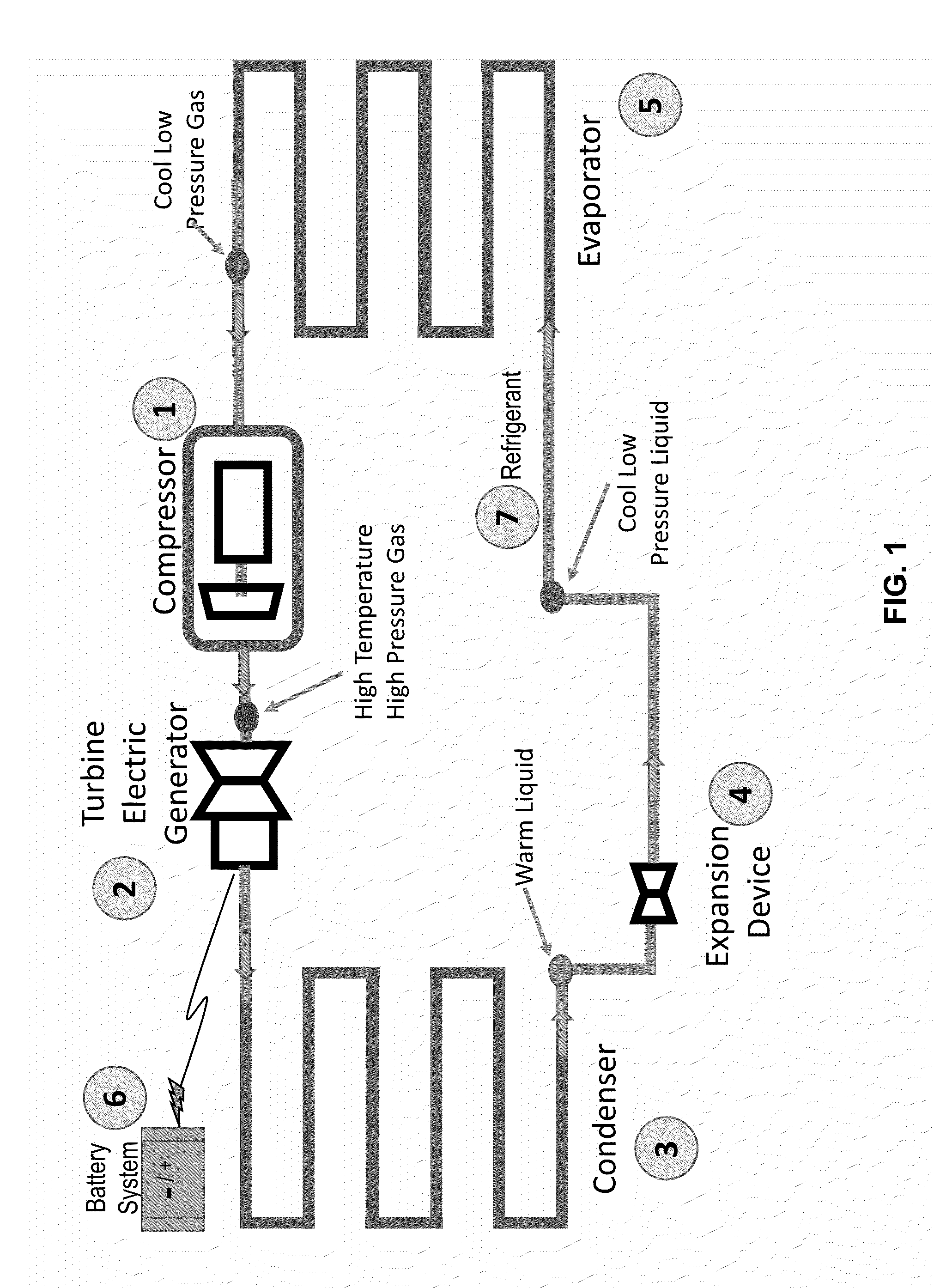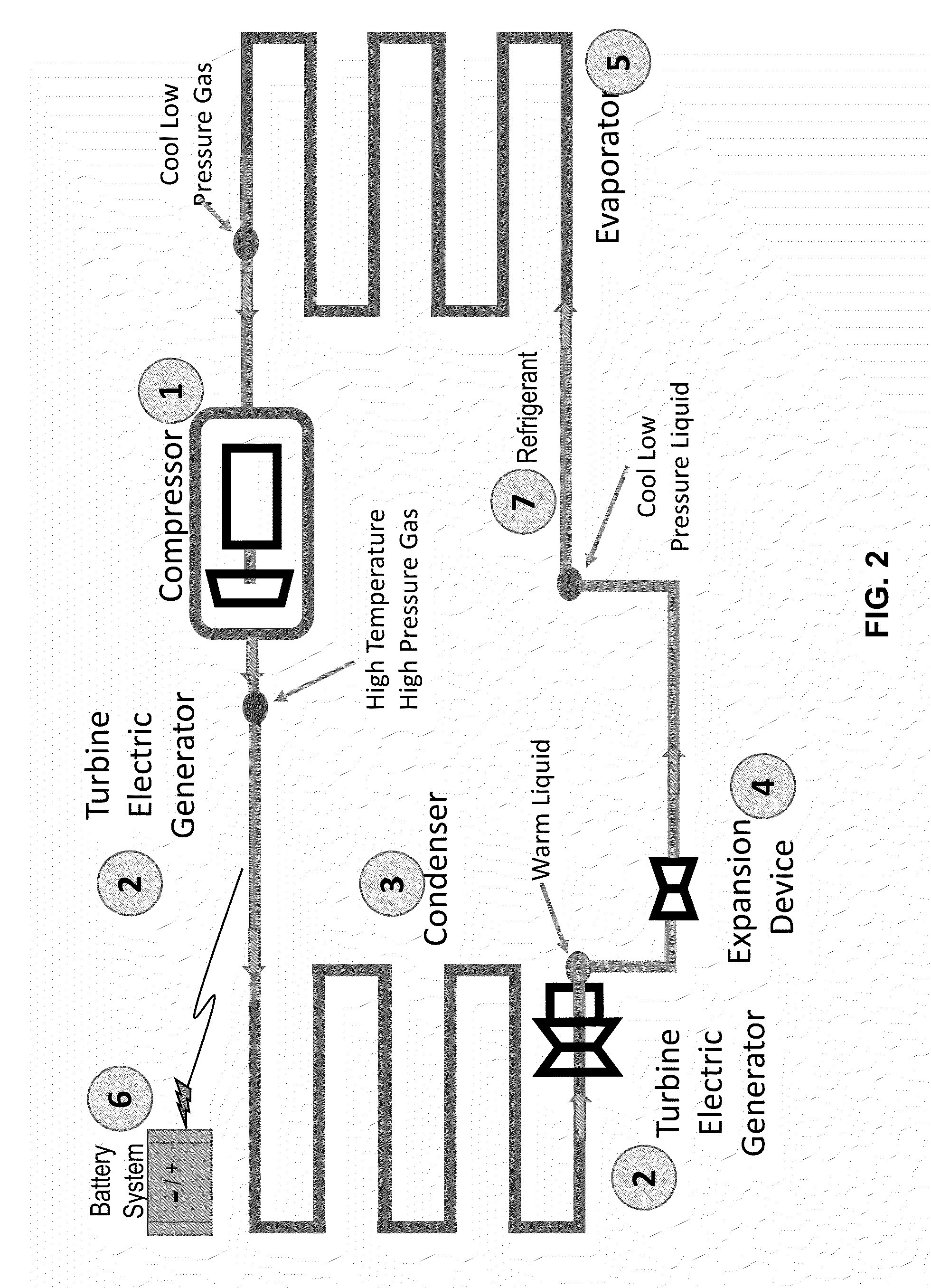HVAC system with energy recovery mechanism
- Summary
- Abstract
- Description
- Claims
- Application Information
AI Technical Summary
Benefits of technology
Problems solved by technology
Method used
Image
Examples
Embodiment Construction
[0016]Electric AC units of EV HVAC systems are generally comprised of a working fluid (the fluid refrigerant that circulates through the air-conditioning system), a compressor, a condensing coil, a metering device and an evaporator. The present invention adds an additional component, a turbine electric generator (TEG) which is used to generate an alternating current.
[0017]Operating within a closed loop system, at times the refrigerant will be both a liquid and a vapor within the loop. The change of state of the refrigerant offers opportunity to transfer energy. The present invention uses energy recovered from the gases under pressure as the power source to drive a turbine electric generator that generates an alternating current used to charge the auxiliary battery and operate other components within the HVAC system such as the compressor which is electrified and has its own motor, inverter and circuit board.
[0018]The TEG is installed on the high pressure side of an electrically powe...
PUM
 Login to View More
Login to View More Abstract
Description
Claims
Application Information
 Login to View More
Login to View More - R&D
- Intellectual Property
- Life Sciences
- Materials
- Tech Scout
- Unparalleled Data Quality
- Higher Quality Content
- 60% Fewer Hallucinations
Browse by: Latest US Patents, China's latest patents, Technical Efficacy Thesaurus, Application Domain, Technology Topic, Popular Technical Reports.
© 2025 PatSnap. All rights reserved.Legal|Privacy policy|Modern Slavery Act Transparency Statement|Sitemap|About US| Contact US: help@patsnap.com



